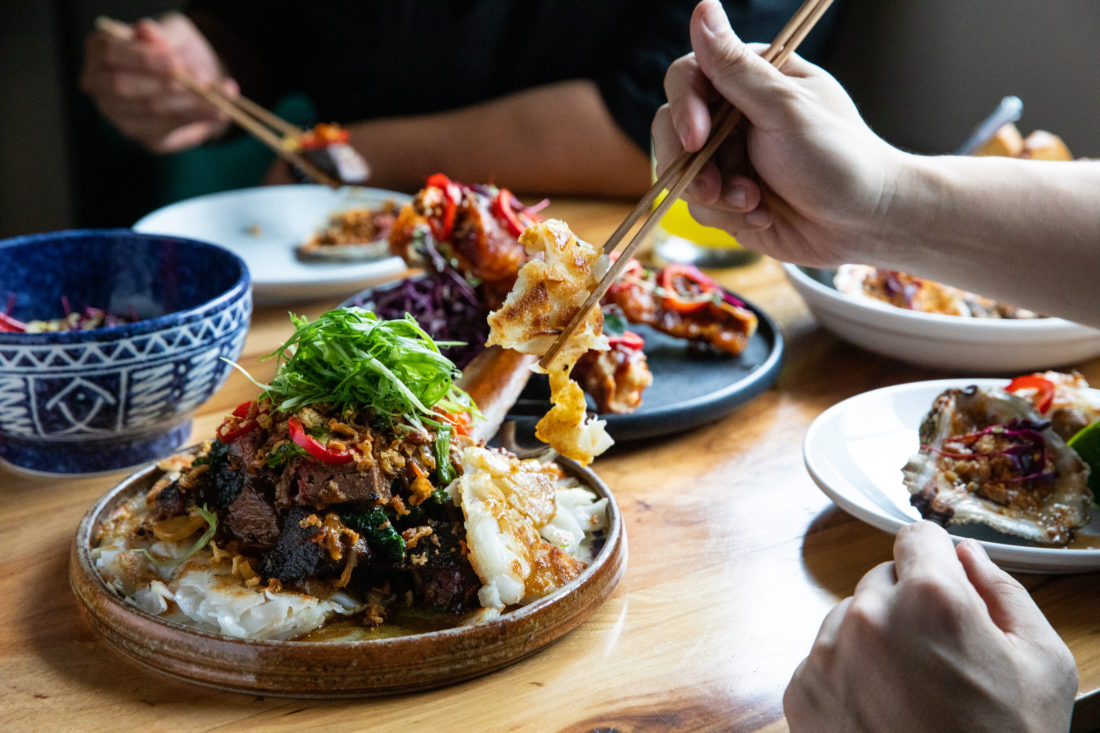Exploring Vietnamese Cuisine: A Parent-Friendly Guide to Navigating Vietnamese Restaurants
Hello, adventurous eaters! Welcome to your ultimate guide on how to navigate Vietnamese restaurants as a parent. Unleash an exciting world of flavors for you and your kiddos, and get ready to dive into the vibrant and delicious world of Vietnamese cuisine! Whether you’re planning your first visit or looking to broaden your family’s taste buds, we’ve got your back with insider tips, kid-approved dishes, and cultural know-how that will turn you into a pro in no time!
Why Choose Vietnamese Food for Your Family?
Vietnamese cuisine is famed for its use of fresh ingredients, minimal use of oil, and reliance on herbs and vegetables — making it one of the healthiest choices out there. If you’re looking for a meal that’s both tasty and nutritious, you’ll find Vietnamese food to be a perfect fit. Plus, the interactive nature of meals, like wrapping your own fresh spring rolls, can be an absolute hit with the little ones!
Getting Started: Navigating the Menu
Encountering a Vietnamese menu can be daunting — with names like ph?, bánh mì, and g?i cu?n, where do you begin? Don’t fret! We’re here to de-mystify these dishes and make your dining experience a breeze.
- Ph? (Fuh): A fragrant beef or chicken noodle soup that’s a staple comfort food. Kids love customizing their bowl with garnishes like fresh herbs, lime, and sprouts!
- Bánh mì (Bahn Me): A delectable sandwich filled with meats, pickled veggies, and herbs in a French baguette — portable and kid-friendly!
- G?i Cu?n (Go-ee Coon): Fresh spring rolls with shrimp, pork, vegetables, and herbs. It’s like a mini adventure as they’re fun to make and eat!
We’ll guide you through other menu essentials as well, including kid-friendly appetizers, what dishes to pick for picky eaters, and understanding spice levels to ensure that every member of the family enjoys their meal.
Understanding Vietnamese Dining Etiquette
Part of the Vietnamese dining experience is embracing the cultural etiquette – it adds to the authenticity and fun of your meal! For starters, it’s common to share dishes amongst the table. This is great for families, as it allows everyone to try a bit of everything and creates a communal and sharing atmosphere beloved in Vietnamese culture.
Here’s a quick rundown on the basics:
- When using chopsticks, remember never to stick them standing up in a bowl of rice, as this is seen as inauspicious.
- Pass dishes with both hands to show respect.
- It’s customary and polite to say “C?m ?n” (gahm uhn), which means “thank you,” after your meal.
Dining out with family is not just about the food, but also about immersing in a new culture and learning together. We’ll make sure you’re well prepared to not just eat like a local, but act like one too!
So, are you excited to bring a joyful and flavorful Vietnamese experience to your family’s table?
We’ve got plenty more insightful information coming up! Stay tuned, as we will dive deeper into the ultimate kid-friendly Vietnamese dishes, how to manage dietary restrictions, and tips for an enriching culinary adventure that will satisfy everyone’s appetites.

5 Essential Tips for Parents Preparing for a Vietnamese Restaurant Visit
Embarking on a culinary journey at a Vietnamese restaurant with your family is an exciting adventure. To ensure a smooth and enjoyable experience, here are five essential tips to keep in mind:
1. Introduce Vietnamese Cuisine at Home First
Start the adventure at home! Introduce your children to Vietnamese flavors with simple homemade dishes. This approach can help to familiarize their palate with the unique tastes and textures they might encounter at the restaurant. For example, DIY summer rolls with peanut dipping sauce can be a fun and interactive way to get your kids excited about Vietnamese food.
2. Teach Kids About Cultural Respect
Instilling a sense of respect for different cultures is a valuable lesson for children. Before heading to the restaurant, have a family chat about Vietnamese customs and why it’s important to show respect. Teach them a few basic Vietnamese phrases, such as “xin chào” (hello) and “c?m ?n” (thank you), to use with the restaurant staff.
3. Consider the Timing of Your Visit
Timing can make or break your dining experience. Aim to visit the restaurant during off-peak hours if possible. You’ll likely receive faster service and a quieter dining environment, which can be less overwhelming for young children and make the experience more enjoyable for the whole family.
4. Check the Menu in Advance
Many Vietnamese restaurants post their menus online. Take the opportunity to look over it with your children beforehand. You can discuss what dishes they might like to try and look up any unfamiliar ingredients. This preparation will help prevent any mealtime indecision and make ordering a breeze.
5. Pack Entertainment and Snacks
Even with the best-laid plans, there might be a wait, or your child could grow impatient. Come prepared with quiet activities to keep them entertained and some small snacks to stave off hunger, especially since Vietnamese cuisine sometimes uses exotic ingredients that might not be to every child’s taste.
Armed with these tips, your family is all set to explore the incredible world of Vietnamese dining. Don’t forget to try some desserts like “chè” (a sweet soup or pudding) or refreshing coconut-based “kem” (ice cream) that are sure to be a grand finale to your family’s Vietnamese culinary adventure!
For more great articles please see here. For more information see here
Disclaimer
The articles available via our website provide general information only and we strongly urge readers to exercise caution and conduct their own thorough research and fact-checking. The information presented should not be taken as absolute truth, and, to the maximum extent permitted by law, we will not be held liable for any inaccuracies or errors in the content. It is essential for individuals to independently verify and validate the information before making any decisions or taking any actions based on the articles.




